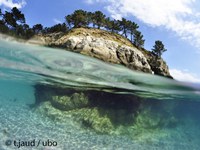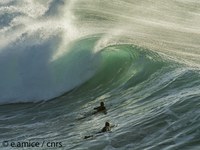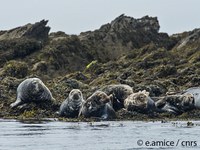1.2.3.4 Marine cultural services

 Cultural services are the nonmaterial benefits people obtain from ecosystems [Beaumont et al., 2007
Cultural services are the nonmaterial benefits people obtain from ecosystems [Beaumont et al., 2007 ]: human cultures, knowledge systems, religions, social interactions, and amenity services have been influenced and shaped by the nature of ecosystems. At the same time, humankind has influenced and shaped its environment to enhance the availability of certain valued services. Recognizing that it is not possible to fully separate the different spiritual, intellectual, and physical links between human cultures and ecosystems, the Millennium Ecosystem Assessment assessed six main types of cultural and amenity services provided by ecosystems: cultural diversity and identity; cultural landscapes and heritage values; spiritual services; inspiration (such as for arts and folklore); aesthetics; and recreation and tourism.
]: human cultures, knowledge systems, religions, social interactions, and amenity services have been influenced and shaped by the nature of ecosystems. At the same time, humankind has influenced and shaped its environment to enhance the availability of certain valued services. Recognizing that it is not possible to fully separate the different spiritual, intellectual, and physical links between human cultures and ecosystems, the Millennium Ecosystem Assessment assessed six main types of cultural and amenity services provided by ecosystems: cultural diversity and identity; cultural landscapes and heritage values; spiritual services; inspiration (such as for arts and folklore); aesthetics; and recreation and tourism.
Both coastal and inland societies value the existence and beauty of charismatic habitats and species such as coral reefs or marine mammals.
Symbolic and aesthetic values
Exaltation of senses and emotions by landscapes, habitats or species. Coastal communities have always shown strong bonds to the sea due to the local identity. Many people enjoy the scenery of natural areas and landscapes. This is clearly reflected in peoples‘ preference to live and visit aesthetically pleasant environments. Aesthetic information has considerable economic importance, which is reflected in such sectors as the real estate where housing with ocean / sea view are usually considerably higher priced than similar housing in other areas [De Groot et al., 2002 ]. Natural and cultural sites linked to traditions and religion are numerous in the coastal zone.
]. Natural and cultural sites linked to traditions and religion are numerous in the coastal zone.
 Recreation and tourism
Recreation and tourism
Opportunities that the natural environment provides for relaxation and amusement. The appeal of marine ecosystems is usually linked to wilderness, sports, or iconic landscapes and species. It can be related to coastal activities (e.g. bathing, sunbathing, snorkeling, scuba diving) and offshore activities (e.g. sailing, recreational fishing, whale watching). Recreational value of ecosystem forms the vast share of valuation studies, which is not surprising given the growing magnitude of the tourism industry. According to Millennium Ecosystem Assessment report [2005 ] nature travel increased at an estimated rate of 10–30% annually in the early 1990s, and in 1997 nature tourism accounted for approximately 20% of total international travel. A number of developing countries depend on tourism as the largest contributor to their economy.
] nature travel increased at an estimated rate of 10–30% annually in the early 1990s, and in 1997 nature tourism accounted for approximately 20% of total international travel. A number of developing countries depend on tourism as the largest contributor to their economy.
 Cognitive effects
Cognitive effects
Trigger of mental processes like knowing, developing, perceiving, or being aware resulting from natural landscapes or living organisms. Inspiration for arts and applications (e.g. architecture designs inspired in marine shells, medical applications replicating marine organic compounds). Material for research and education (e.g. discoveries of new deep sea species). Information and awareness (e.g. respect for nature through the observation of marine wild life).

